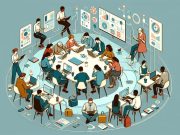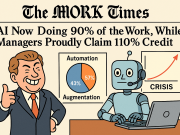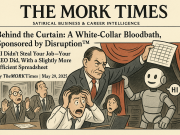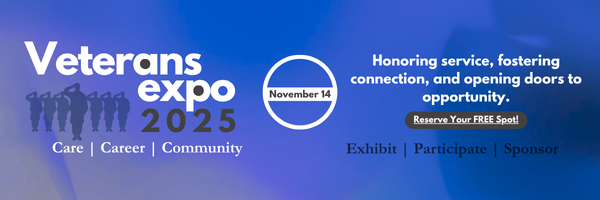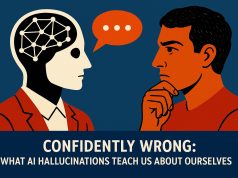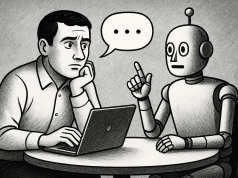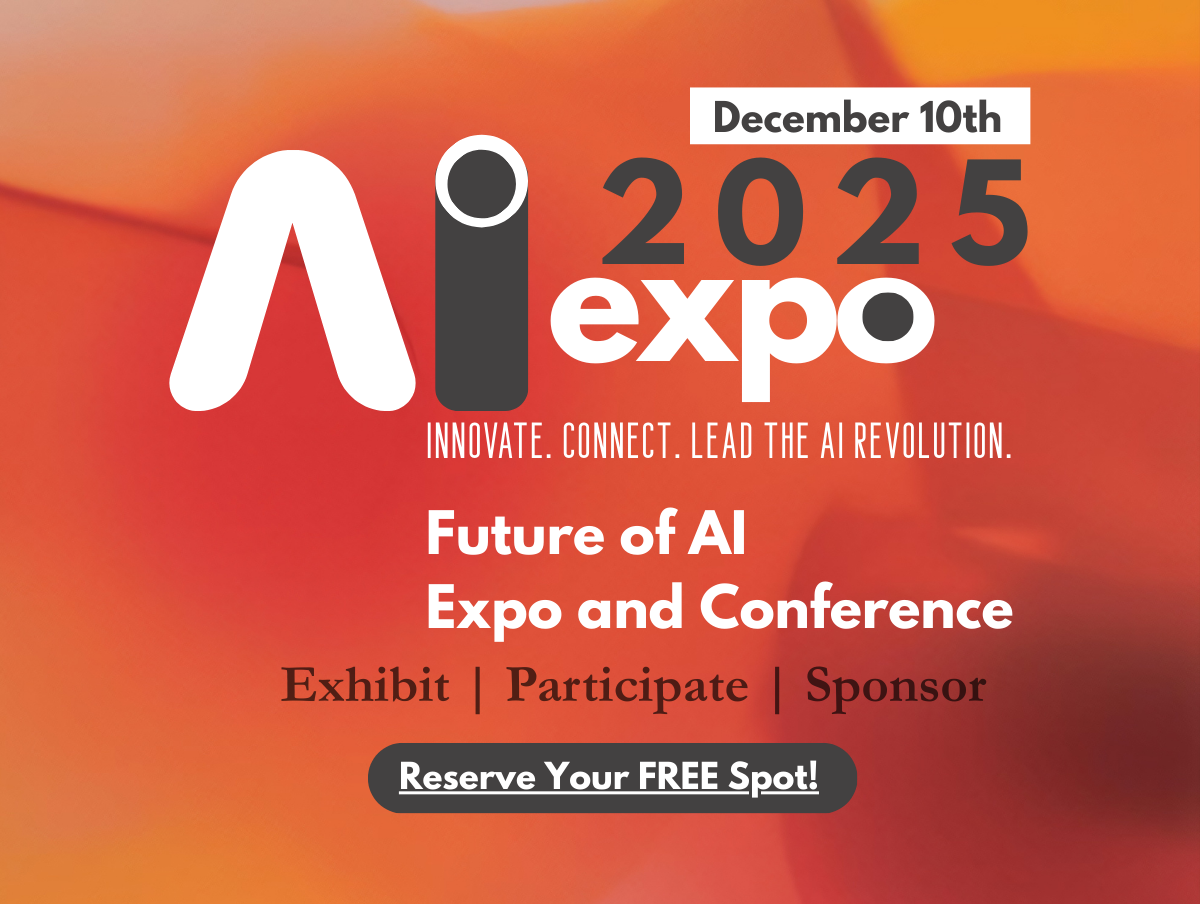Once upon a time, a crow figured out how to raise the water level in a pitcher by dropping pebbles into it. It wasn’t taught. It just learned. Nature, it turns out, has always been the best curriculum developer.
Today, as we peer into the cognitive clockwork of large language models like Claude, courtesy of Anthropic’s recent study on “Tracing the thoughts of a large language model“, we may be experiencing a crow-with-pebbles moment for human learning and development (L&D). These artificial minds, trained not by stepwise instruction but through immersion in data and context, are revealing not just how they think—but how we might rethink learning itself.
Before we unpack, lets join this years most anticipated #FutureOfWork conference: WorkCongress2025
Let’s unpack this.
Lesson One: Learning is Emergent, Not Scripted
Claude wasn’t “taught” to speak multiple languages, write poetry, or solve math problems. It emerged into these capabilities by being exposed to vast datasets and then constructing its own internal conceptual maps.
In L&D, we often focus on curriculum—modules, certifications, progress bars. But Claude’s cognitive evolution invites us to consider ecosystems over curricula. What if we immersed our employees in contextual, cross-functional, dynamic environments instead of static learning paths? Like coral reefs, learning ecosystems thrive not through instruction but through interaction.
Takeaway: Transition from structured teaching to context-rich immersion.
Lesson Two: Plan to Learn… Ahead
One of the most delightful surprises from the research was that Claude plans its responses multiple words ahead—especially in poetry. For instance, when asked to complete a rhyme, Claude pre-selects plausible rhyming words and constructs backward to reach them.
Humans do this too—just ask any kid trying to end a story with “and they all lived happily ever after.” But our L&D systems rarely encourage forward-thinking learning strategies. We optimize for the next task, not the future state.
We should be helping learners plan beyond the lesson—setting learning destinations and helping them chart their journey backwards from future aspirations to current actions.
Takeaway: Teach forward—design learning with long-term trajectories, not short-term objectives.
Lesson Three: Hallucination as a Feature (Not a Bug)
Claude sometimes hallucinates—that is, it confidently makes stuff up. But here’s the twist: hallucination happens when its “refusal to answer” circuit is deactivated by confidence cues, even if those cues are misplaced.
Humans are no different. We fill knowledge gaps with assumptions, peer cues, or overconfidence. Our L&D systems need to become debuggers of delusion—training learners to spot when they’re guessing, when they’re rationalizing, and when they need to ask better questions.
Takeaway: Build self-awareness and critical thinking into every L&D journey. Equip learners to challenge their own outputs.
Lesson Four: The Universal Language of Thought
Claude, like many LLMs, seems to think in a conceptual space that’s language-agnostic. It translates meaning internally before rendering it into a specific tongue. This is profound.
In workplaces, learning is often fragmented by silos—departments, disciplines, domains. But what if we designed L&D around conceptual universals—like problem-solving, empathy, resilience, collaboration—and then translated those into specific roles?
Takeaway: Teach the mind, not the manual. Create learning pathways that are transferable across contexts.
Lesson Five: Interpretation Is the New Instruction
Claude often can’t explain how it came to its conclusions—much like how we humans don’t always know why we believe what we do. Anthropic’s researchers had to use tools inspired by neuroscience to “microscope” Claude’s reasoning.
This is where L&D can become truly transformative. We must evolve from delivering knowledge to decoding cognition. Tools like reflective journaling, peer coaching, and metacognitive prompts can act as our microscopes—surfacing the “why” behind the “what”.
Takeaway: Make interpretability core to learning. If you can’t explain how you learned it, you probably haven’t.
Final Thoughts: The Worker1 Model Meets the Claude Model
At TAO.ai, we believe in Worker1—the empathetic, high-performing professional who uplifts their community by first uplifting themselves. Claude, for all its silicon soul, shows us that even artificial minds benefit from immersion, planning, self-monitoring, and reflection.
Let’s build L&D systems not just to train, but to transform. To make learners more like crows with pebbles—curious, context-aware, and unafraid to experiment.
Because in the age of AI, it won’t be knowledge that separates us from machines.
Here are 5 actionable hacks for efficient human learning, inspired by how Claude—a large language model—learns and reasons, based on Anthropic’s interpretability research:
1. Learn Across Contexts, Not Just Curricula
Claude Hack: Claude processes concepts in a language-agnostic, conceptual space, meaning it can transfer knowledge from one language or domain to another effortlessly.
🧠 Human Application: Don’t just study a concept in one format. Explore it through podcasts, articles, peer discussions, and even across unrelated disciplines. When learning negotiation, read a business book, but also watch courtroom dramas or study how ants allocate food (seriously—nature negotiates).
Hack: Create “context stacking”—learn the same concept from at least three different angles or mediums.
2. Plan Your Learning Like Claude Plans Rhymes
Claude Hack: Before completing a sentence or poem, Claude pre-selects goal words and structures its output to arrive at them smoothly.
🧠 Human Application: Start with your learning destination. Want to become a product manager? Visualize the skills, mindset, and day-to-day decisions you’ll make—then work backward to build your roadmap.
Hack: Use backward chaining—define your desired end state and identify the 3–5 steps required to get there.
3. Train for Resilience, Not Just Recall
Claude Hack: Claude’s default is to say “I don’t know”—it only answers when its confidence thresholds are met. Hallucinations happen when those controls fail.
🧠 Human Application: Train your inner “don’t know” muscle. In learning, confidence isn’t competence. Build the habit of pausing and questioning your assumptions.
Hack: End each learning session by asking yourself: “What don’t I know yet?” or “What might I be wrong about?”
4. Use Conceptual “Shortcuts” Through Interconnected Thinking
Claude Hack: Claude doesn’t memorize answers—it links facts conceptually (e.g., Dallas → Texas → Austin) through multi-step reasoning.
🧠 Human Application: Instead of rote memorization, build knowledge webs. If you’re learning marketing, link consumer psychology to behavioral economics to TikTok trends.
Hack: Create mind maps—visually link each new concept to 2-3 things you already know. Learning sticks better when it’s part of a network, not a list.
5. Interrogate Your Explanations
Claude Hack: Claude sometimes “fakes” its reasoning—giving plausible, but incorrect, explanations. Interpretability tools reveal when it’s just making things up.
🧠 Human Application: We do the same. That feeling of “I totally understand it” fades fast when asked to teach it.
Hack: Use the Feynman Technique—explain what you’ve learned in simple language to a 10-year-old (or a rubber duck, if no kids are nearby). If you can’t, revisit the concept.
Bonus: Think Like a Scientist, Learn Like a Crow
Claude’s learning is closer to how nature operates—through iteration, feedback, and adaptation. Efficiency in learning doesn’t come from how fast we absorb, but from how deeply we connect, reflect, and adapt.





